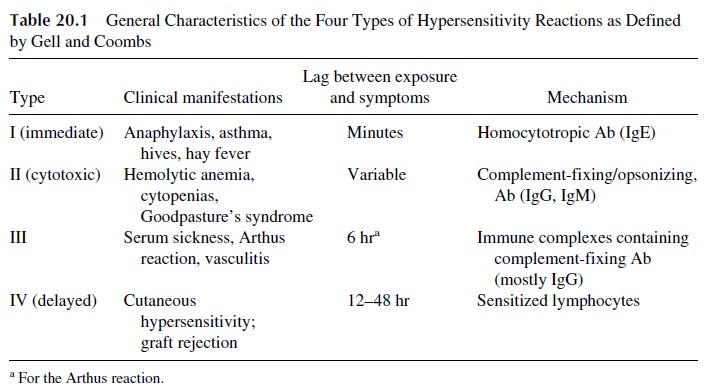Chapter: Medical Immunology: Hypersensitivity Reactions
Hypersensitivity Reactions: Introduction
Hypersensitivity Reactions
INTRODUCTION
The immune response of vertebrates has evolved as a mechanism to eradicate infectious agents that succeed in penetrating natural anti-infection barriers. However, in some in-stances the immune response can be the cause of disease, either as an undesirable effect of an immune response directed against an exogenous antigen or as a consequence of an au-toimmune reaction. These undesirable immune responses define what is known as hyper-sensitivity, i.e., an abnormal state of immune reactivity that has deleterious effects on the host. A patient with hypersensitivity to a given compound suffers pathological reactions as a consequence of exposure to the antigen to which he or she is hypersensitive. The term “al-lergy” is often used to designate a pathological condition resulting from hypersensitivity, particularly when the symptoms occur shortly after exposure.
Hypersensitivity reactions can be classified as immediate or as delayed, depending on the time elapsed between the exposure to the antigen and the appearance of clinical symptoms. They can also be classified as humoral or cell-mediated, depending on the arm of the immune system predominantly involved. A classification combining these two ele-ments was proposed in the 1960s by Gell and Coombs, and although many hypersensitiv-ity disorders may not fit well into their classification, it remains popular because of its sim-plicity and obvious relevance to the most common hypersensitivity disorders.
The Gell and Coombs’ classification of hypersensitivity reactions considers four types of hypersensitivity reactions. Type I, II, and III reactions are basically mediated by antibodies with or without participation of the complement system; type IV reactions are

While in many pathological processes mechanisms classi-fied in more than one of these types of hypersensitivity reactions may be operative, the sub-division of hypersensitivity states into four broad types aids considerably in the under-standing of their pathogenesis.
Related Topics